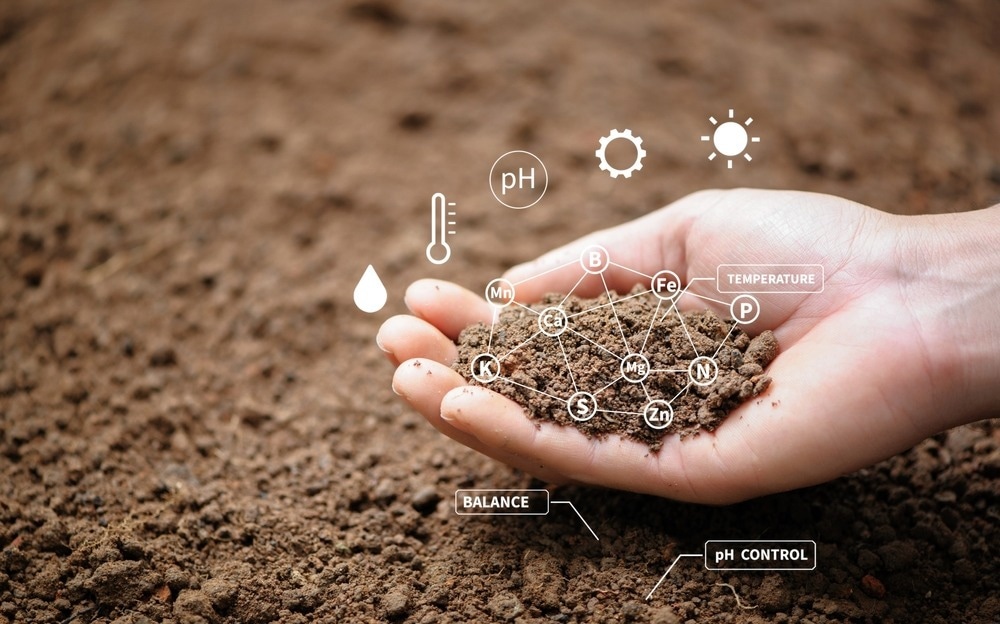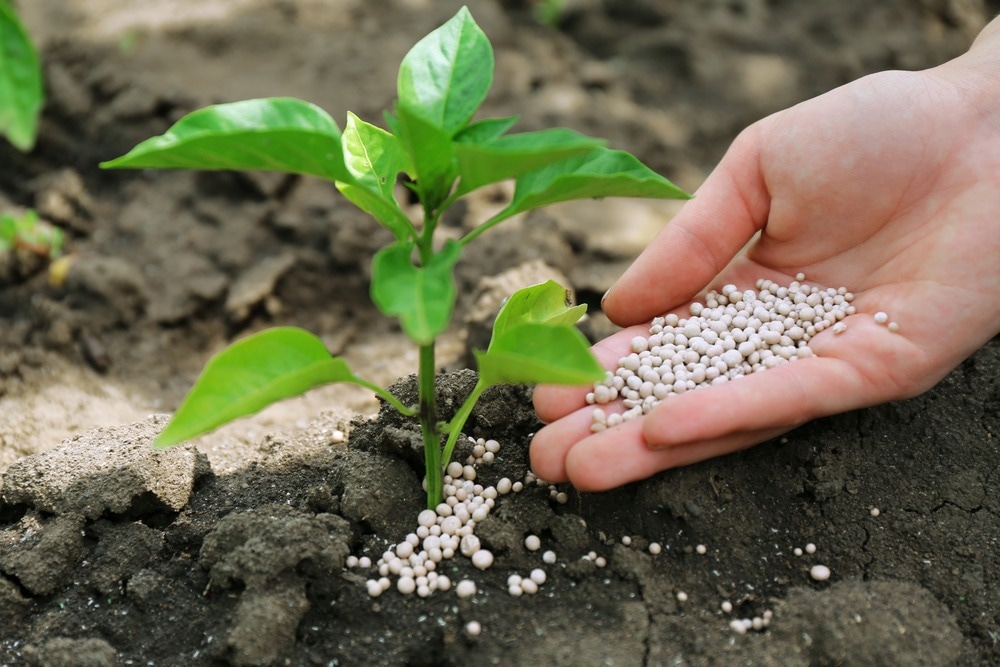Soil fertility is a principal factor driving crop productivity as well as overall habitat health. Despite many agricultural strategies focusing on increasing soil fertility, the health of soil systems around the world has been decreasing consistently over the last century. Addressing this trend and finding more sustainable strategies is key to ensuring future food security.

Soil fertility. Image Credit: Deemerwha studio/Shutterstock.com
The Growing Need to Increase Soil Fertility
Soil fertility refers to the capacity of soil to supply plants with sufficient nutrients in appropriate proportions that is not toxic. Throughout soil systems, natural soil possesses “inherent fertility” due to the action of organisms that move soil and provide nutrients from excretion or decomposition, which results in an intricate balance of nitrogen, phosphorus, and potassium that promotes plant health. However, the natural balance of soil fertility has been disrupted especially over the last century due to intensive agricultural activities.
Specifically, the cultivation of crops disrupts nutrient cycles in soil by killing organisms, limiting the diversity of species, and introducing a range of toxic substances. Additionally, mechanical cultivation softens soil which oxidizes soil and releases nutrients faster, thus depleting the already limited nutrient reserves. As a result, farmers have gradually added more and more fertilizer to compensate for declining soil health but have found little success.
Around the world, the decline in soil health is increasingly concerning and policies have tried to remediate this decrease. According to the FAO, soils across Africa lose an average of 48 Kg/ha of nutrients per year but only receive one-tenth of the fertilizers required to compensate for this loss. Therefore, more focus has been placed on measures to mitigate and resolve decreasing soil fertility through “acquired fertility”.
Increasing soil fertility using manure, fertilizer, tillage, irrigation, and other such measures is referred to as ‘acquired fertility'. These strategies have gained in popularity since the 1920s, with remedies such as horn manure, silica, clay, and organic compost being used by Rudolf Steiner to improve soil fertility. Since then, diverse strategies have emerged to improve soil fertility.
Improving Soil Fertility Through Nutrient Supplies
Traditionally, farmers have targeted the nutrient supply of soil through direct or indirect methods to improve soil fertility. Critical micronutrients for plant growth and development include iron (Fe), boron (B), manganese (Mn), zinc (Zn), copper (Cu), molybdenum (Mo), chlorine (Cl), and nickel (Ni). However, few studies have quantified the need for these micronutrients in different environments.
This was reviewed in a 2021 publication by Thapa et al., who considered the use of micronutrient supplements in soybean production. Authors quantified micronutrient rates under variable environmental conditions and found that soil organic matter was the most beneficial supplement to soybean production across nutrient types. As a result, authors encourage management strategies that incorporate soil organic matter to ensure nutrient availability and improve soil fertility and health for sustainable soybean production.
Nutrient supplements can also be used in combination, although this is rarely considered. This was examined by Youseff et al., in a 2021 study that evaluated the effects of different fertilizers and biofertilizers and their combinations. The authors used fertilizers and biofertilizers in a two-year field experiment studying stevia plants under the influence of nitrogenous fertilizers and effective microorganisms applications.
The results of the study found that combining nitrogen fertilizer and effective microorganisms was the most effective in improving crop growth and overall plant properties. Plant or environment-specific strategies can therefore optimize the use of nutrient supplements, which has allowed for more balanced fertilizer use and decreased environmental degradation. Combining fertilizers can also be effective but other emerging techniques using carbon nanoparticles, sewage sludge, are providing new insights into soil fertility.

Soil fertilizer. Image Credit: Africa Studio/Shuttestock.com
Environmental Enhancers and Future Methods to Improving Soil Fertility
In response to the gradual degradation of natural habitats, research and policies have focused on more sustainable enhancers to soil fertility that can be used for crop production. However, this concept is far from new, as farmers throughout history have used methods such as grazing to trample the soil and graze on most plants, allowing crops to have plenty of space and nutrients once planted. Nonetheless, recent methods are pushing the effectiveness of fertilizers further.
The most common form of fertilizer that has minimal disruption to soil systems remains the addition of organic matter, which promotes a healthy and fertile soil and helps improve soil structure. For instance, green manure and the addition of legumes amidst crop systems helps fix nitrogen. Beyond organic matter, some strategies also rely on micro-dosing fertilizer to replenish losses from plant uptake.
Other strategies to improve soil fertility on larger and temporal scales also include crop rotations, increasing crop diversity and richness by avoiding monocultures, and the use of biological pest controls to avoid the use of pesticides or insecticides. In turn, such methods provide longer-term soil fertility whilst maintaining crop productivity.
Sources
- Boudjabi, S., & Chenchouni, H. (2021). On the sustainability of land applications of sewage sludge: How to apply the sewage biosolid in order to improve soil fertility and increase crop yield? Chemosphere, 282, 131122. https://doi.org/10.1016/j.chemosphere.2021.131122
- Thapa, S., Bhandari, A., Ghimire, R., Xue, Q., Kidwaro, F., Ghatrehsamani, S., Maharjan, B., & Goodwin, M. (2021). Managing Micronutrients for Improving Soil Fertility, Health, and Soybean Yield. Sustainability, 13(21), 11766. https://doi.org/10.3390/su132111766
- Youssef, M. A., Yousef, A. F., Ali, M. M., Ahmed, A. I., Lamlom, S. F., Strobel, W. R., & Kalaji, H. M. (2021). Exogenously applied nitrogenous fertilizers and effective microorganisms improve plant growth of stevia (Stevia rebaudiana Bertoni) and soil fertility. AMB Express, 11(1). https://doi.org/10.1186/s13568-021-01292-8
- Zhao, F., Xin, X., Cao, Y., Su, D., Ji, P., Zhu, Z., & He, Z. (2021). Use of Carbon Nanoparticles to Improve Soil Fertility, Crop Growth and Nutrient Uptake by Corn (Zea mays L.). Nanomaterials, 11(10), 2717. https://doi.org/10.3390/nano11102717
Further Reading
Last Updated: Oct 5, 2022